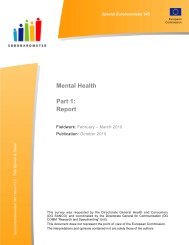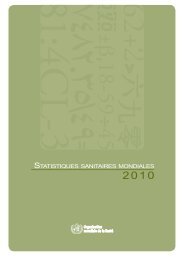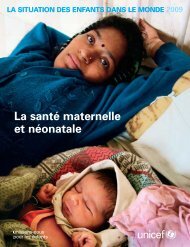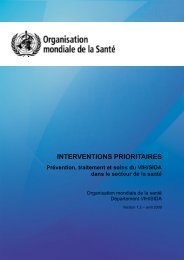Global Tuberculosis Control 2010 - Florida Department of Health
Global Tuberculosis Control 2010 - Florida Department of Health
Global Tuberculosis Control 2010 - Florida Department of Health
You also want an ePaper? Increase the reach of your titles
YUMPU automatically turns print PDFs into web optimized ePapers that Google loves.
Estimated values are shown as best estimates followed<br />
by lower and upper bounds. The lower and upper<br />
bounds are defined as the 2.5th and 97.5th centiles <strong>of</strong><br />
outcome distributions produced in simulations.<br />
See for further details.<br />
Estimated numbers are shown rounded to two<br />
significant figures. Estimated rates are shown rounded<br />
to three significant figures unless the value is under<br />
100, in which case rates are shown rounded to two<br />
significant figures.<br />
Estimates for all years are recalculated as new<br />
information becomes available and techniques are<br />
refined, so they may differ from those published in<br />
previous reports in this series. Estimates published in<br />
previous global TB control reports should no longer be<br />
used.<br />
<br />
Graphs where displayed show data from all years within<br />
the range stated.<br />
<br />
Data shown in this annex are taken from the WHO<br />
global TB database on 31 August <strong>2010</strong>. Data shown<br />
in the main part <strong>of</strong> the report were taken from the<br />
database on 17 June <strong>2010</strong>. As a result, data in this<br />
annex may differ slightly from those in the main part <strong>of</strong><br />
the report.<br />
Data can be downloaded from www.who.int/tb/data.<br />
<br />
<br />
: the population estimate used by the NTP<br />
(148 million) is lower than that <strong>of</strong> the United Nations<br />
Population Division (162 million). Using the smaller<br />
population estimate gives a notification rate <strong>of</strong> 109<br />
per 100 000 population (all forms <strong>of</strong> TB) and 74 per<br />
100 000 population (smear-positive TB).<br />
Bangladesh completed a survey <strong>of</strong> the prevalence <strong>of</strong> TB<br />
disease in 2009. A reassessment <strong>of</strong> the epidemiological<br />
burden <strong>of</strong> TB, using data from the survey combined<br />
with an in-depth analysis <strong>of</strong> surveillance and<br />
programmatic data, will be undertaken in 2011.<br />
<br />
: the population estimate used by the NTP<br />
(1164 million) is lower than that <strong>of</strong> the United Nations<br />
Population Division (1198 million). Using the smaller<br />
population estimate gives a notification rate <strong>of</strong> new<br />
smear-positive cases <strong>of</strong> 116 per 100 000 population. The<br />
incidence <strong>of</strong> smear-positive TB has been estimated at 75<br />
per 100 000 population using data from surveys <strong>of</strong> the<br />
annual risk <strong>of</strong> infection. Using the notification rate for<br />
smear-positive TB <strong>of</strong> 54 per 100 000 population (using<br />
national estimates <strong>of</strong> population size) and a smearpositive<br />
incidence rate <strong>of</strong> 75 per 100 000 population<br />
gives an estimated case detection rate <strong>of</strong> 72%.<br />
<br />
Myanmar completed a survey <strong>of</strong> the prevalence <strong>of</strong> TB<br />
disease in <strong>2010</strong>. A reassessment <strong>of</strong> the epidemiological<br />
burden <strong>of</strong> TB will be undertaken following finalization<br />
and dissemination <strong>of</strong> survey results.

















